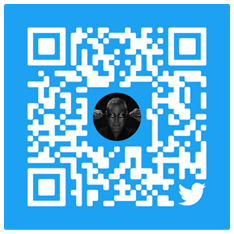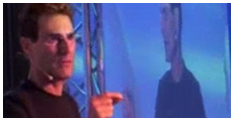EPILOGUE
WHAT DOES IT ALL MEAN -both Geller’s apparent ability to duplicate drawings and bend metals, and the evidence that certain individuals can muster enough “psychic energy,” after seeing Geller perform, to reproduce many of his feats?
One editorial summed up the situation: A “challenge to scientists will arise if investigations continue to turn up signs of psychokinetic powers . . . It would then be urgently necessary for the scientific community to come to terms with something totally beyond its powers of explanation.” That statement appeared in the traditionally conservative journal Nature in December 1973. Since then more evidence on paranormal phenomena – involving Geller and other individuals – has surfaced, and the scientific community has begun to turn its attention to research of the paranormal. Where the field of parapsychology once was the exclusive province of psychologists, today it has become an active arena for physical scientists as well: In August 1974, a group of physicists met in Geneva, Switzerland, to discuss how such arcane concepts of quantum physics as “time reversal” and “acausality” might be relevant to an understanding of psychical events; and in February 1975, a group of physicists and engineers met in Tarrytown, New York, at a conference entitled “The Physics of Paranormal Phenomena.” It would have been impossible to convene such meetings just a decade ago, for reputable physical scientists were not interested in the field of parapsychology – or if they were, they kept it a well-guarded secret.
Why the turnabout? What has suddenly drawn so many physicists, chemists, and engineers into psychical research?
Certainly one reason has to do with the sophisticated electronic equipment used by modem psychical researchers. Devices such as electroencephalographs, temperature sensors, galvanic skin detectors, and others permit scientists to monitor a subject’s brain waves, heart and respiration rates, and electrical skin conductivity during a test of paranormality, and to observe physiological correlations that accompany psychical happenings. Thus, in appearance, modem psychical research more closely parallels conventional scientific inquiry. And appearance is important. Another reason has to do with the willingness of scientists in the last decade to study humans in such altered states of consciousness as hypnosis, dreaming, and conditions of sensory deprivation and bombardment; paranormal perceptions are often found to spring naturally from such “twilight” levels of the mind. [ For an overview of parapsychological research conducted in the last decade see: The Roots of Coincidence, Arthur Koestler (New York: Random House, 1972); Dream Telepathy, Montague, et al. (New York: Macmillan, 1973); Supersenses: Our Potential for Parasensory Experience, Charles Panati (New York: Quadrangle, 1974).
Unlike other psychics and ordinary individuals who have been studied for parasensory abilities, Geller claims that he experiences no shift in consciousness when he performs his feats. However, many scientists believe that Geller does undergo consciousness changes, but that, for some reason presently unknown, they are so slight that Geller himself is not aware of them. All attempts to measure alterations in Geller’s brain-wave pattern during paranormal tests have yielded negative results.] But there is another factor that accounts for the recent influx of physical scientists to psychical research: Uri Geller. Regardless of one’s personal attitude toward Geller, no one can deny the fact that in a mere four years Geller has focused more scientific attention on the field of parapsychology than it has seen in its entire ninety-year history. Further, research conducted with Geller has constituted the first parapsychological evidence to be published in an “establishments’ scientific journal. To a large degree all of this attention has had positive effects on the quality of the work being done. But it has also raised a question that is being asked with great concern these days: Is the Geller-aroused interest in parapsychology really good for the field as a whole?
Some parapsychologists think it is not. “Many people think Uri Geller is all that there is to parapsychology today,” says Charles Honorton, President of the Parapsychological Association and a leading psychical researcher at the Maimonides Medical Center in Brooklyn. Honorton feels that because of all the publicity Geller has generated, too strong, and unfounded, associations have been made in the minds of the public between Uri Geller and the entire field of psychical research. Honorton speaks for many other parapsychologists when he expresses one fear. “If Geller should ever be proved a fraud, or if it should ever be found that he uses magic when his paranormal talents fail him, the setback for the field of parapsychology could be the greatest in its history.”
Other researchers, however, take a different view of Geller: they see him as a long-needed ” superattraction” who is bringing attention to a field where research activity has always been minimal and results scarce. “The questions posed by paranormal phenomena are far too complex for psychologists alone to tackle,” says physicist Wilbur Franklin. “It was important that physical scientists enter the field and conduct their own kind of research. Geller, I believe, has been one major factor for this happening.”
Franklin and Honorton typify two different views, and figuratively speaking, at least, they head two opposing camps on the issue of Uri Geller and psychical research. But there is one point on which both sides agree: more research on Geller is necessary; first, to establish beyond any reasonable doubt the true nature of Geller’s talents, then, assuming this is affirmatively established, to determine the exact extent of his abilities – not only what Geller can do, but what he cannot do. For this information is also of value in trying to understand the nature and origins of psychic abilities.
Geller himself is willing to participate in further scientific investigations. He has already undergone perceptual and PK experiments in Japan, Switzerland, and France. (They were conducted too late for the results to be included in this book.) Beyond this, there are the experiments proposed by Ronald Hawke, who, by using sound waves in metals, and light waves in plastics, hopes to understand the nature of the deformations in these materials, which Geller will attempt to bend. Eldon Byrd at the Naval Surface Weapons Center has suggested a series of experiments that would investigate whether there is a magnetic component to the energy that Geller uses in accomplishing his feats.. Charles Honorton has designed a rigorous series of perceptual experiments to establish the extent of Geller’s telepathic and clairvoyant ability. And shortly before this manuscript was completed, William Cox, at the Institute for Parapsychology in Durham, North Carolina, submitted to Geller an outline of the experiments he would like to conduct on both Geller’s perceptual and psychokinetic abilities. These represent only a small fraction of the tests that have been proposed by qualified researchers- in various scientific fields.
Another Geller-related area of study is the apparent PK abilities in adolescents and adults that develop spontaneously after some form of contact with Geller. Physicists Dr. John Hasted and Dr. John Taylor in England and medical psychologist Dr. Thelma Moss in the U.S. are just three of the researchers who are continuing to investigate this phenomenon. It has been suggested that the design of future research in the paranormal, with Geller and other psychics, can be greatly improved, and the protocols greatly tightened, by consultation with a skilled magician, who can impose experimental safeguards to prevent the possibility of fraud. An increasing number of psychical investigators are following this suggestion. And in the next few years it might become standard procedure to have a magician’s name, and his recommendations, as an integral part of parapsychological research papers.
The plans for continued research with Geller and other individuals are exciting, but the efforts will be futile if the scientific community at large does not keep an open mind toward research on paranormal phenomena and if respected scientific journals do not publish the results of well-conducted psychical investigations. The appearance of the SRI paper in Nature overturned a century-old publishing hurdle; it can be hoped only that other journals will follow Nature’s lead.
What will it mean if further psychical research yields uneqivocally positive results? Parapsychologists have been saying for years that there exist human senses beyond the five ordinary ones parasenses, or perceptual modalities that transcend our present understanding of space and time. Western science has really just begun to research the subject of human consciousness. Already it has determined that there are such things as parasenses, and that the parasenses of ordinary individuals can be aroused if changes in levels of consciousness are induced. Crudely now; feebly. But that’s just for the present. Further research will refine our knowledge of our parasenses, and our ability to develop them – for the betterment of humankind and a clearer understanding of our place in the universe. Research on Uri Geller could greatly add to that knowledge, and lessen the time, by decades, before we have answers to the paranormal workings of the mind.


Latest Articles

Motivational Inspirational Speaker
Motivational, inspirational, empowering compelling 'infotainment' which leaves the audience amazed, mesmerized, motivated, enthusiastic, revitalised and with a much improved positive mental attitude, state of mind & self-belief.



















